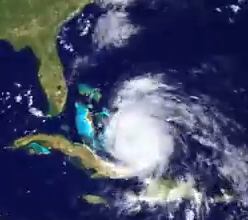The Federal Communications Commission has issued a guide for how to stay in communication with others if you live in a Hurricane Irene affected area. It’s definitely worth a read, although I wouldn’t have put “Tune-in to broadcast and radio news for important news alerts” all the way at the bottom of the list.
Here are the first five tips. The rest are posted here.
1. Limit non-emergency phone calls. This will minimize network congestion, free up “space” on the network for emergency communications and conserve battery power if you are using a wireless phone;
2. Keep all phone calls brief. If you need to use a phone, try to use it only to convey vital information to emergency personnel and/or family;
3. Try text messaging, also known as short messaging service (SMS) when using your wireless phone. In many cases text messages will go through when your call may not. It will also help free up more “space” for emergency communications on the telephone network;
4. If possible try a variety of communications services if you are unsuccessful in getting through with one. For example, if you are unsuccessful in getting through on your wireless phone, try a messaging capability like text messaging or email. Alternatively, try a landline phone if one is available. This will help spread the communications demand over multiple networks and should reduce overall congestion;
5. Wait 10 seconds before redialing a call. On many wireless handsets, to re-dial a number, you simply push “send” after you’ve ended a call to redial the previous number. If you do this too quickly, the data from the handset to the cell sites do not have enough time to clear before you’ve resent the same data. This contributes to a clogged network;



